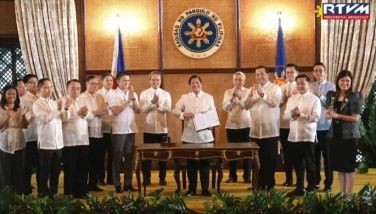Tourist VAT refund seen adding up to P13 billion to GDP

MANILA, Philippines — The plan to refund the value-added tax (VAT) of foreign tourists is expected to add up to P13 billion to the economy annually amid the propensity of travellers to consume more with such a reimbursement mechanism.
During the Senate Committee on Ways and Means hearing yesterday, the National Economic and Development Authority (NEDA) expressed support to implement a VAT refund for non-resident tourists as it can increase tourism receipts and attract more visitors.
NEDA Undersecretary Rosemarie Edillon said based on the agency’s study, the additional spending per annum is estimated to be from P6 billion to P9 billion starting 2024.
This is in comparison to the status quo, which means no VAT refund, that yields revenues of P3.4 billion to P5.1 billion.
Considering multiplier effects on other sectors, particularly retail trade, such a mechanism could redound to P8.6 billion to P12.8 billion in additional gross value added (GVA) per year.
This compares to the P4.7 billion to P7.1 billion in GVA currently.
“The difference between the refund scenario versus the status quo is P3.8 billion to P5.7 billion, so it will really generate additional activities,” Edillon said.
“International tourism is considered an export of services and we need to consider ourselves as competing with our neighbors. Since our neighbors have already implemented this scheme, it will be good for us to do the same,” she said.
The NEDA assumption took into consideration the tourism arrival projections under the Tourism Development Plan, marginal propensity of tourists to consume more, average spending at P9,311, as well as the country’s VAT collection efficiency rate at 40 percent.
Data showed that foreign tourists allocate 12 percent of their budget to shopping, which is almost the same as for recreation and entertainment.
Most of their budget at 30 percent still goes to accommodation, about 16 to 20 percent for food, and roughly 13 to 20 percent for transport services.
Finance Assistant Secretary Dakila Napao, for his part, emphasized that the expected revenue loss of some P4 billion would be more than compensated by the increase in other expenses.
“We know that there will be revenue erosion, but at the same time we recognize that there will be an uptick in economic activities that will result in the recoupment of lost revenues,” Napao said.
Further, Napao clarified that only 85 percent of the VAT would be refunded as the government will take into account transaction fees and other fees to be paid to the third-party service provider so as not to burden the government with additional costs.
The VAT refund seeks to stimulate tourism and trade, make the country competitive against neighboring countries, and boost profitability of domestic business.
Currently, the Philippines imposes a 12 percent VAT on goods and services. Across the top 15 tourist destinations in Asia Pacific, VAT rates range from a low of five percent in Taiwan to a high of 18 percent in India.
In terms of refund rate, full refund is being implemented in Thailand, Japan, Malaysia, South Korea, Indonesia, Singapore, Taiwan, and Australia.
It should be noted that only India, the Philippines, and Cambodia do not have a working VAT refund mechanism for tourists among the top 15 destinations in Asia Pacific.
- Latest
- Trending


























 Exclusive
Exclusive